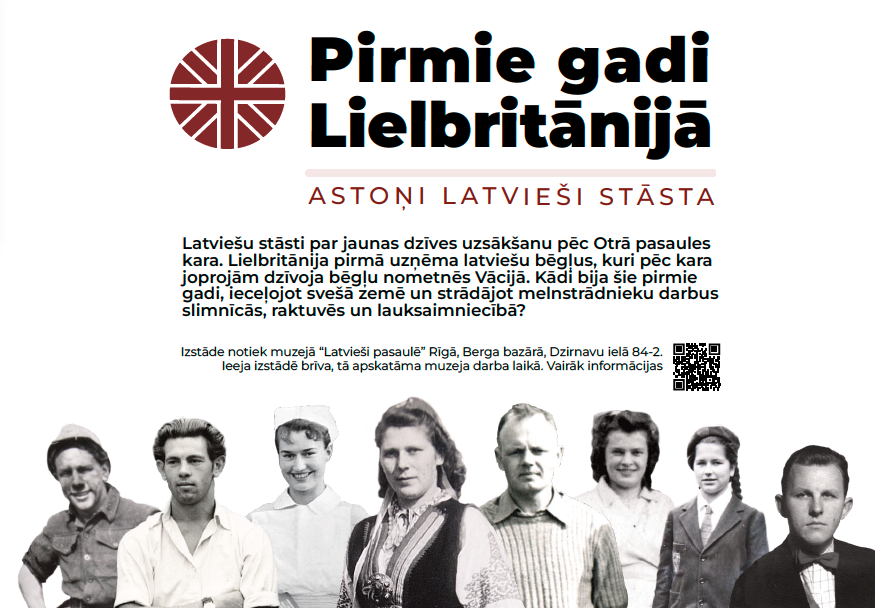The exhibition sheds light on the lives of eight Latvians as they leave refugee camps and enter a foreign land. Eyewitness interview quotes, museum objects and photographs provide insight into their living conditions in Britain in the 1940s and 1950s – working in hospitals, mines and on farms; living in barracks, cramped rooms or charity houses; studying in English schools and universities. These Latvians were united by the loss of their homeland, the harsh experience of refugee camps and the hope for a new, peaceful life.
Great Britain was the first country to receive Latvian refugees in an organized manner, implementing the labor recruitment programs “Balt Cygnet” and “Westward Ho!”. In 1946-1950, about 18,000 Latvians from refugee camps in Germany immigrated there. Living conditions in the first years were difficult – there was scarcity, the work was hard, and the pay was meager. Many later emigrated further, but approximately 13,000 Latvians remained to live in Great Britain. The most active tried to find each other, and soon after their arrival, strong Latvian communities began to form in many places.
Creators of the exhibition “First Years in Britain: Eight Latvians Tell Their Stories”
Museum and Research Centre “Latvians Abroad”
Curator: Marianna Auliciema
Design: Jeremy Smedes
Installation: Uldis Dimiševskis
Supporters: Ministry of Culture of the Republic of Latvia, State Cultural Capital Fund

